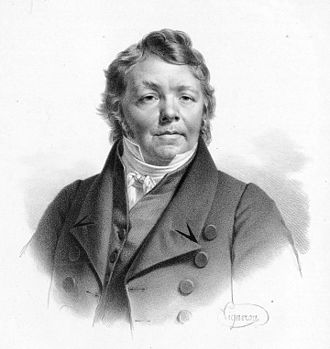Johann Nepomuk Hummel
(14 November 1778 – 17 October 1837)
Austrian composer and virtuoso pianist.
Piano Septet No. 1 in D minor, Op. 74
Septet for piano, flute, oboe, horn, viola, cello & double bass (or 2 cellos) in D minor, Op. 74,
written in ~1816.
00:00 - I. Allegro con spirito
10:55 - II. Menuetto o Scherzo. Allegro
15:44 - III. Andante con Variazioni
23:31 - IV. Finale. Vivace
Hummel was not only considered one of the most important composers of his time but was also widely regarded as the greatest piano virtuoso of his era. We owe the transmission of Mozart's pianistic style and technique to him. From early on, Hummel was recognized as a prodigy and not just on the piano. Brought to Vienna from his native Pressburg (today Bratislava) at the age of 4, Hummel auditioned to study with Mozart and became the only full-time student Mozart ever had. He also studied with Albrechtsberger, Salieri and Haydn. His compositions were widely played during his lifetime and throughout the 19th century. Even in the 20th century, the general opinion has been that Hummel's works reached the highest possible level accessible to someone who was not an ultimate genius. Hence of his generation, only Beethoven's works could be ranked higher. Yet despite this, his marvelous music disappeared throughout much of the 20th century. And though recently it has begun to be recorded with some frequency, the same unfortunately cannot be said for its appearance on the concert stage. Stylistically, Hummel's music generally represents the end of the Viennese Classical Era and the bridge period between it and Romanticism.
When Hummel composed this Piano Septet in 1816, it achieved immediate popularity and could be
heard on the concert stage regularly until the First World War.
- The opening movement, Allegro con spirito, is brilliantly written for all of the instruments.
There is a Beethovenian feel to the work through its use of triplets.
- The spirited and somewhat dramatic second movement, Minuetto e Scherzo, is certainly more
a scherzo than a minuet.
- This is followed by an Andante con variazione. The theme is clearly an Austria folk melody.
The use of tremolo is particularly effective.
- The finale, Vivace, begins with a rustic dance. This is followed by a fugue and a more lyrical second subject. The work ends with a brilliant coda.
'♣ 음악 감상실 ♣ > - Hummel' 카테고리의 다른 글
| Johann Nepomuk Hummel - Rondo on a Russian Folk Theme for piano and orchestra (0) | 2016.07.11 |
|---|---|
| Johann Nepomuk Hummel. Trio for Piano, Violin & Cello in E major. Op. 83 (0) | 2016.05.19 |
| Johann Nepomuk Hummel - Trumpet Concerto in E-flat major (0) | 2016.02.13 |
| Johann Nepomuk Hummel - Clarinet Quartet in e flat major (1808) (0) | 2016.02.13 |
| Johann Nepomuk Hummel- Grand Serenade op. 63 (0) | 2016.02.12 |
